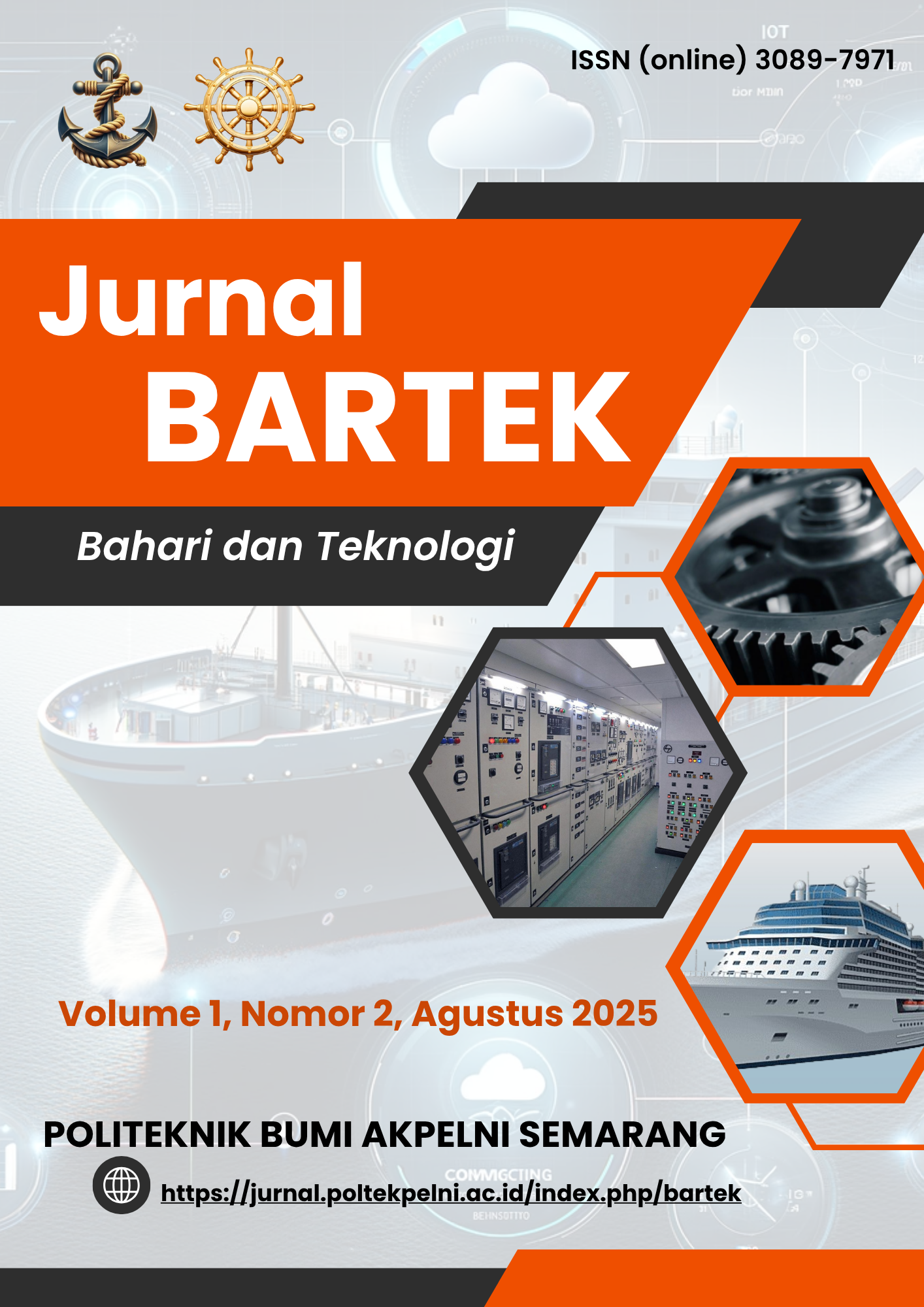Analisis Kerusakan Main Engine Reversing Type Angker bar Pada Kapal MT. Alice XXV
DOI:
https://doi.org/10.6425/j8cte586Keywords:
crust, valve pneumatic, distributor valve, ship maintenance, condensation in the recervoir air tank.Abstract
During the author's observation on the MT. Alice XXV vessel, an issue occurred where the ship was unable to reverse. This incident was suspected to be caused by a jammed component in the pneumatic system. The objective of this study is to analyze the main cause of the vessel's inability to reverse, as well as the prevention and handling methods to maintain operational efficiency. This research is qualitative in nature. The instruments examined include the air starting system and the pneumatic control system. Data collection methods consist of direct observation in the engine room, interviews with the ship's crew, and technical data collection. A descriptive qualitative data analysis approach was used. Additionally, an analysis was conducted on the scale buildup in various pneumatic components and the factors affecting its formation rate. The results of the study indicate that MT. Alice XXV was unable to reverse due to a jammed pneumatic component, caused by scale buildup in the pneumatic system, which impeded the transmission of the command signal to the reversing system. The scale was caused by water particles entering the pneumatic system due to condensation of air inside the air bottle. High humidity in the air bottle led to condensation and the accumulation of water within it. To address this issue, preventive measures such as regular draining of the air bottle and cleaning of pneumatic filters are required.
Published
Issue
Section
License
Copyright (c) 2025 JURNAL BAHARI DAN TEKNOLOGI (BARTEK)

This work is licensed under a Creative Commons Attribution-ShareAlike 4.0 International License.








